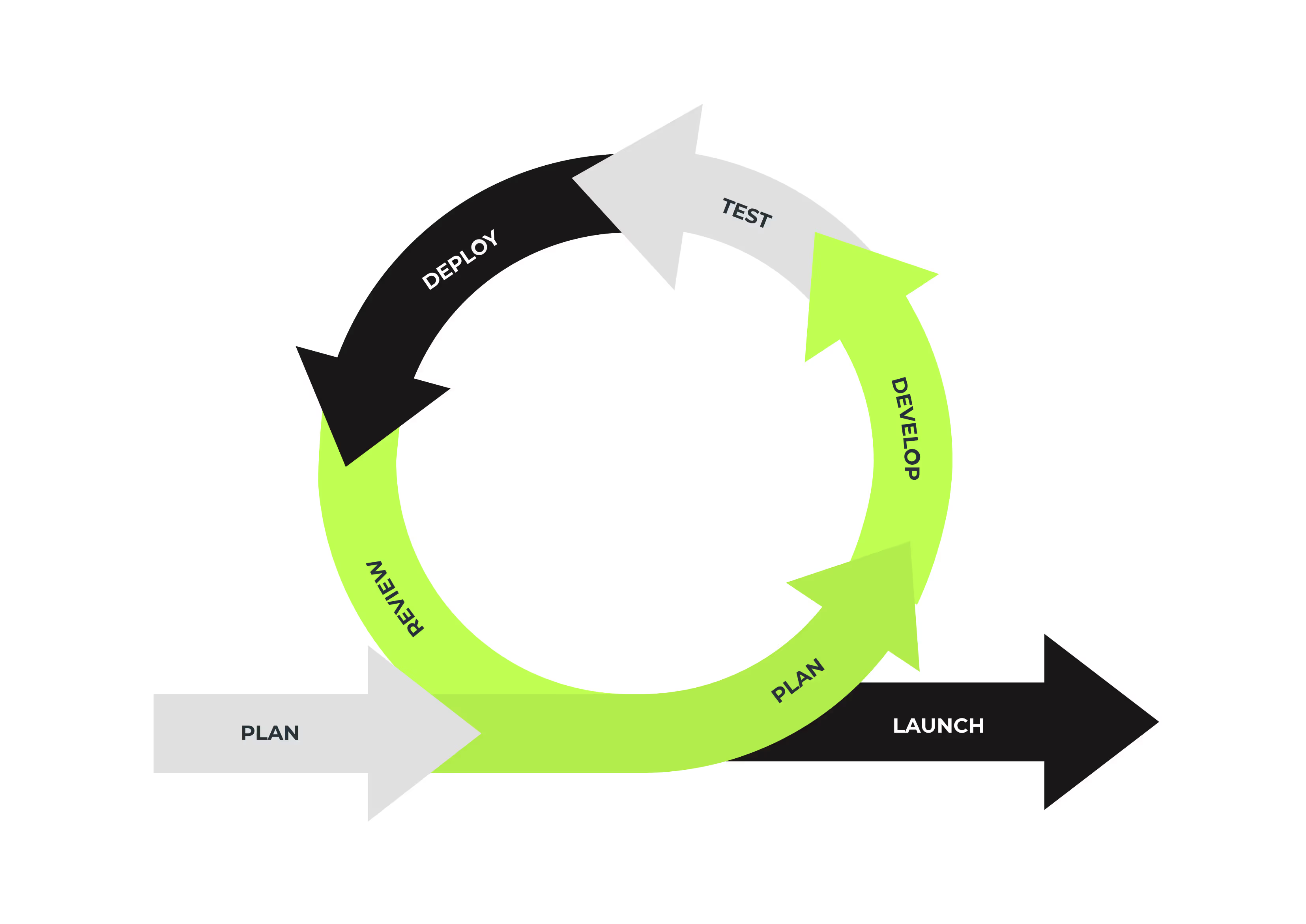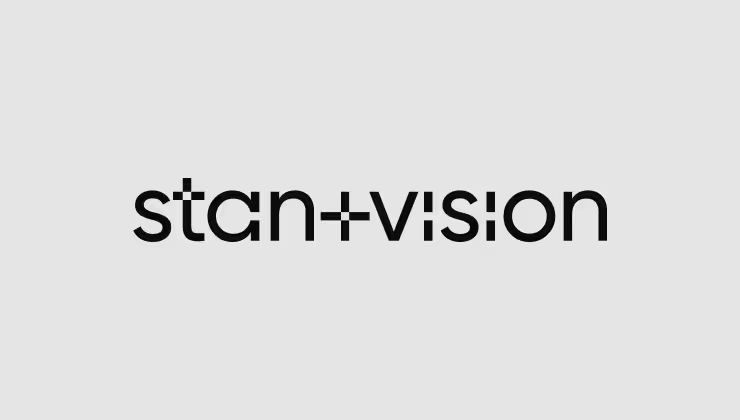.avif)
What is prototyping?
At its core, prototyping involves creating preliminary versions of a product to test and validate design concepts. To achieve this, designers often create prototypes, which can vary widely in fidelity, from simple sketches to intricate physical models, depending on the stage of the design process and the project’s specific goals. Various prototyping methods such as comic stories, paper interfaces, sketches, paper prototypes, Lego prototypes, wireframes, and Wizard of Oz prototypes are useful for early-stage prototyping and testing different solutions at the early stages of ideation.
Prototype in design thinking
In the context of design thinking, a prototype serves as a tangible representation of ideas generated during the ideation phase. Rough paper prototypes can be used for early-stage validation and iteration. The prototyping stage is crucial for testing assumptions, iterating quickly, and ensuring the design works as intended before reaching the users. It allows designers to move beyond conjecture and speculation, enabling them to gather valuable feedback from stakeholders and end-users through real-world interactions with the prototype.
.avif)
Importance of prototyping:
Prototyping is the linchpin of Design Thinking, a methodology that emphasizes user-centered design. Here’s a deeper dive into why prototyping is so crucial:
Prototyping helps in refining ideas to achieve the final design through iterative testing and feedback from real users.
Validating design concepts:
Imagine pouring time and resources into developing a product only to discover later that it doesn’t meet user needs. Prototyping, especially through interactive prototypes, helps avoid this pitfall.
By creating a tangible representation of a design concept, designers can get real user feedback early and often. This allows them to identify usability issues, gauge user interest, and validate their design direction before significant investment is made.
Early detection of flaws:
It's much easier and cheaper to fix problems on a prototype than on a finished product. Prototyping helps identify flaws in functionality, user flow, or even basic design elements.
For example, a prototype might reveal that a button placement is awkward or a menu structure is confusing. Addressing these issues early on saves time, money, and rework later in the development process.
User-centered design:
Design Thinking prioritizes the user. Prototyping allows designers to put their ideas in front of real users and observe their interactions.
This user testing provides invaluable insights into how users perceive the design, how they navigate through it, and what challenges they might encounter. This feedback is crucial for creating a product that is not just functional but also truly user-friendly.
Communication powerhouse:
Prototypes go beyond just testing. They are powerful communication tools that can be used to:
Pitch ideas to stakeholders: A well-crafted prototype can effectively communicate a design vision to investors, clients, or team members, garnering buy-in and support
Facilitate collaboration: Prototypes provide a common ground for designers, engineers, and other stakeholders to discuss and refine ideas, fostering better collaboration and communication.
Benefits beyond functionality:
Prototyping isn't just about functionality. It can also be used to explore aesthetics, branding, and overall user experience.
By testing different design elements with users, designers can determine what resonates best and create a product that is not just usable but also visually appealing and emotionally engaging.
Low-fidelity prototypes - the foundation of design exploration
Low-fidelity prototypes are the cornerstone of rapid prototyping in Design Thinking. They are like the rough sketches an artist creates before diving into a detailed painting. Here's a closer look at their strengths and how they are used effectively:
Fast and flexible:
- Low-fidelity prototypes, like paper sketches or basic digital wireframes, are incredibly quick and inexpensive to create. This allows designers to explore a wide range of design ideas without getting bogged down in details.
- They can be easily modified during user testing sessions, allowing for real-time iteration based on user feedback. This flexibility is crucial in the early stages of design when core concepts are still being solidified.
.avif)
Focus on core functionalities:
- Low-fidelity prototypes don't focus on aesthetics or visual details. Instead, they concentrate on replicating the core functionalities and user interactions of the final product.
- This is because user feedback at this stage is most valuable for understanding how well the design meets user needs and achieves its intended purpose.
Benefits of low-fidelity prototypes:
- Low investment, high return: Since they require minimal resources, low-fidelity prototypes allow for early and frequent testing, ultimately saving time and money in the long run by identifying flaws early.
- Reduced bias: The lack of visual polish in low-fidelity prototypes reduces the risk of user feedback being swayed by aesthetics. Users can focus on the core functionalities and provide feedback on usability and user flow.
- Promotes creativity: The quick and disposable nature of low-fidelity prototypes encourages designers to explore a wider range of ideas without feeling wedded to any one concept.
Common low-fidelity prototyping techniques:
- Paper prototypes: Sketches of app screens, website layouts, or product features on paper or notecards. Users can interact with these “paper mockups” to provide feedback on navigation and information flow. Paper prototypes are cheap, easy to create, modify, and animate, and are less intimidating to users. They are useful for exploring novel solutions and testing user understanding without the distractions of superficial details.
- Digital wireframes: Basic digital mockups created with software like Figma or Balsamiq. These wireframes can be used to test user interactions and layout functionality.
- Card sorting: Users are presented with cards representing features or functionalities and asked to group them in a logical way. This helps designers understand how users categorize information and navigate through a product.
Transitioning to high-fidelity prototypes:
Once the core functionalities and user flow have been validated through low-fidelity prototypes, designers can move on to creating high-fidelity prototypes.
These more polished prototypes focus on visual design and user experience, allowing for testing of aesthetics, branding, and user interactions in a more realistic setting.
By effectively utilizing low-fidelity prototypes, designers can lay a strong foundation for their ideas. This allows them to identify and address usability issues early on, ultimately leading to the creation of successful and user-centered products.
Rapid prototyping: the engine of design thinking
Design Thinking thrives on the concept of "failing fast and learning faster." Rapid prototyping is the engine that fuels this process by allowing designers to create and test ideas quickly and cheaply. Here's a deeper dive into how it works:
Fast iteration:
Traditional product development often involved lengthy design phases before building a physical prototype. This meant precious time and resources were wasted on concepts with flaws only discovered later.
Rapid prototyping flips this on its head. By creating low-fidelity prototypes (think cardboard cutouts or basic digital models), designers can test core functionalities and user interactions early and often.
Benefits of digital prototypes:
Digital tools like Figma or Sketch allow for rapid creation and modification of digital prototypes. This is perfect for exploring different design directions and getting quick user feedback on layouts and workflows.
Imagine sketching a new app interface on a computer and having a user “play” with it within minutes. This kind of iterative testing helps identify usability issues early on.
Physical prototypes: beyond the screen:
While digital prototypes are great for software and user interfaces, physical prototypes add another dimension. 3D printing, laser cutting, and CNC machining allow designers to create tangible models that users can interact with in the real world.
This is crucial for products with physical components or those that require users to perform specific actions. Testing a physical prototype of a new pair of headphones or a child's toy can reveal design flaws that might be missed in a digital environment.
Rapid doesn't mean rough:
While rapid prototypes are meant to be quick and inexpensive, they should still be functional enough to provide valuable feedback. A prototype with nonsensical button placements won't tell you much about usability.
Focus on replicating the core functionalities and user interactions you want to test.
Overall, rapid prototyping in design thinking allows designers to:
- Validate their ideas with real users.
- Identify and fix usability issues early.
- Save time and resources by avoiding costly mistakes later in development.
- Continuously refine and improve designs through iteration.
By rapidly creating and testing prototypes, designers can ensure they're on the right track and ultimately develop products that truly meet user needs.
Ensuring prototype quality: user testing at the core
While rapid prototyping allows for fast iteration, prototype quality is essential to get meaningful user feedback. Here's how user testing plays a critical role:
User-centered design:
- The core principle of Design Thinking is keeping the user at the center of the process. User testing with prototypes ensures the design is intuitive and addresses user needs.
- By observing users interact with the prototype, designers can identify areas of confusion, frustration, or inefficiency.

Focus on key aspects:
Not all aspects of a final product need to be meticulously detailed in a prototype. Focus on replicating the functionalities and features most critical to the user interface and user experience you’re testing.
For example, a prototype for a new mobile app might have basic placeholder graphics but focus on accurately replicating the navigation structure and core interactions.
Balancing fidelity with flexibility:
- There's a balance to be struck between prototype fidelity and flexibility. A highly detailed prototype might look impressive but can be cumbersome to modify during testing.
- The key is to create a prototype with enough detail to provide a realistic experience but remain flexible enough to allow for quick changes based on user feedback.
Usability testing techniques:
- Several user testing techniques can be employed with prototypes. Common approaches include:
- Moderated usability testing: A facilitator guides users through tasks while observing their behavior and collecting feedback.
- Unmoderated usability testing: Users complete tasks with the prototype independently, often through online platforms, with their actions and comments recorded for analysis.
- A/B testing: Users are presented with two variations of a prototype to see which one performs better in terms of user engagement or task completion.
Beyond functionality:
- User testing goes beyond just functionality. It can also reveal user preferences for aesthetics and overall user experience.
- Pay attention to user comments on the prototype's visual design, layout, and ease of use. This feedback can guide design decisions moving forward.
Iteration is key:
- The true power of user testing lies in the iterative process. By incorporating user feedback, designers can refine the prototype, addressing usability issues and improving the overall design.
- This cycle of testing, iterating, and retesting ensures the final product is not just functional but also user-friendly and truly meets user needs.

By prioritizing user testing and ensuring prototype quality, designers can leverage the power of rapid prototyping to create exceptional products.
Experiential prototyping:
Innovative approaches like experiential prototyping go beyond traditional methods by immersing stakeholders in simulated environments to gather firsthand insights into user behaviors and preferences. Paper prototyping, a cost-effective and easy-to-modify method, plays a crucial role in this process by allowing for the creation of low- to mid-fidelity prototypes for testing and iterating on initial design ideas. By creating immersive experiences, designers can uncover latent needs and aspirations that may not be apparent through conventional methods. Popular prototyping tools like Sketch, InVision, and Flinto.
Q&A
What does prototype mean?
A prototype is an early sample or model of a product used to test and refine concepts. It helps designers visualize ideas, gather feedback, and identify issues before full-scale production, ensuring the final product meets user needs and intended requirements.
What is a prototype in product design?
A prototyping device is a device created to evaluate ideas before the end of their life cycle. It's a good practice to mock every aspect and interaction in a prototype to verify that you have implemented a fully developed product. 8 July, 2021.
What is prototyping in design thinking?
Using prototyping, designers can create a tangible product from paper to digital in a controlled manner. Team builders make prototypes of various fidelity for capturing design concepts and testing users. Prototypes can help your company develop and validate their design so they can sell a suitable product.
Why do we prototype in design?
The most valuable advantage to prototypes is its ability to simulate real and future products. It can help attract clients to buy a particular product before investing any resources necessary to implement it. You may verify an original idea before production and discover design errors or design faults.

.avif)




